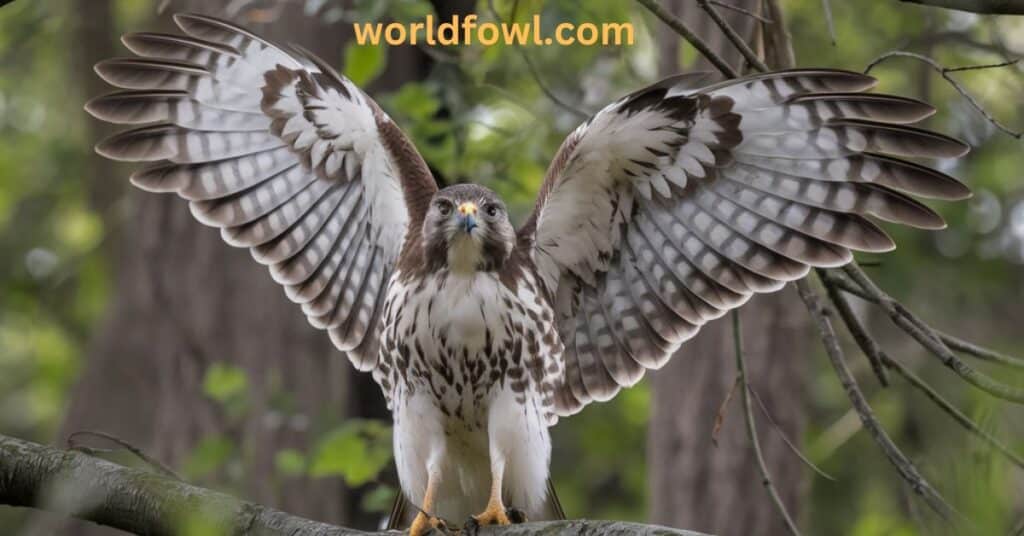Hawks, with their impressive wingspans, sharp talons, and keen eyesight, are often viewed as symbols of freedom and power in the animal kingdom. However, for those living in proximity to these majestic birds, a common question arises: Do Hawks Attack People? While hawks are generally not aggressive toward people, certain circumstances can provoke them to exhibit aggressive behavior. This article will explore the nuances of hawk behavior, the reasons behind aggressive encounters, and best practices for coexistence.
Understanding Hawks: Anatomy and Behavior
The Role of Hawks in Ecosystems
”Do Hawks Attack People ”Hawks are birds of prey belonging to the family Accipitridae, which encompasses eagles, kites, and vultures. They play a crucial role in their ecosystems by controlling populations of small mammals, birds, and insects.
- Predatory Role: As predators, hawks help maintain the balance of their ecosystems. By preying on rodents and other small animals, they can prevent overpopulation and the resultant ecological consequences.
- Scavenging Behaviors: Some hawks also engage in scavenging, feeding on carrion when necessary. This behavior aids in nutrient cycling within ecosystems.
Anatomy of Hawks
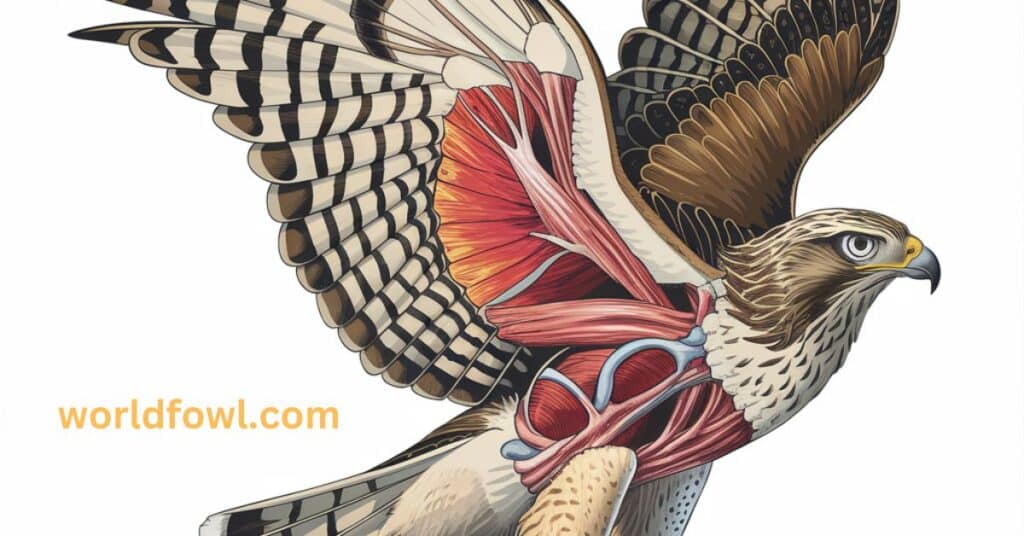
Understanding the anatomy of hawks can shed light on their predatory behaviors and interactions with humans.
- Keen Vision: Hawks have extraordinary eyesight, allowing them to spot prey from great distances. Their eyes are adapted for detecting movement and color, making them highly efficient hunters.
- Talons and Beak: Hawks possess sharp talons and a hooked beak, specialized for capturing and consuming prey. Their talons can exert significant pressure, making them effective at grasping and immobilizing their catches.
- Wingspan and Flight: Hawks are known for their powerful flight capabilities. Their wings are structured to provide both speed and maneuverability, allowing them to chase down prey or evade threats.
Natural Instincts
” Do Hawks Attack People ” Hawks exhibit several natural behaviors that influence their interactions with humans:
- Predatory Instincts: Hawks are instinctual hunters, relying on their keen senses to locate and capture prey. Their hunting strategies are often honed through experience, making them skilled predators.
- Territorial Behavior: Many hawk species are territorial, especially during breeding seasons. They defend their nesting sites and hunting territories vigorously, which can lead to aggressive encounters with perceived threats.
Types of Hawks
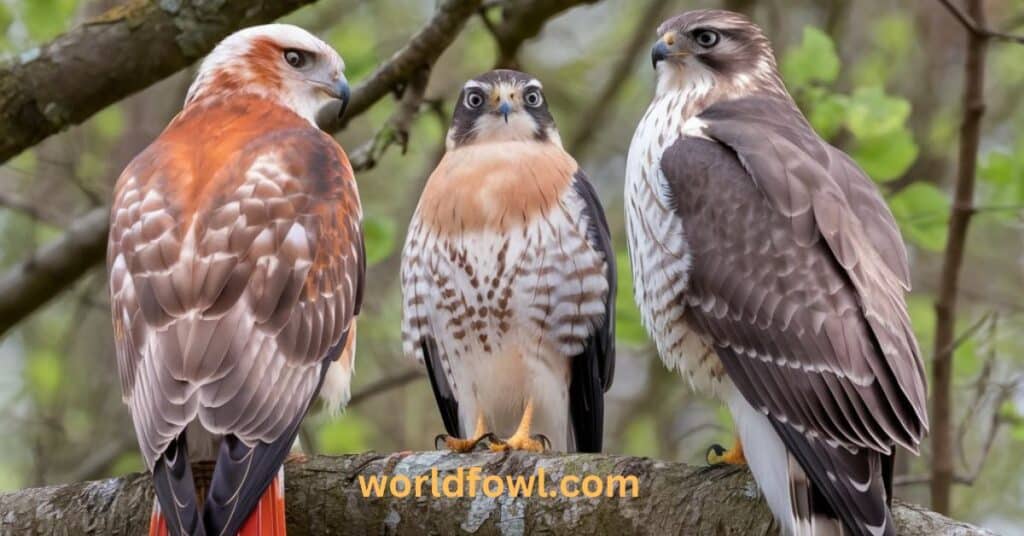
There are numerous species of hawks, each exhibiting different behaviors and levels of aggression. Some of the most common include:
- Red-tailed Hawk: One of the most recognizable hawks in North America, known for its distinctive red tail and adaptability to various habitats.
- Cooper’s Hawk: Smaller and more agile, Cooper’s Hawks thrive in wooded areas and often hunt smaller birds.
- Sharp-shinned Hawk: Similar in size to the Cooper’s Hawk, this species is known for its speed and agility, often preying on smaller birds.
- Harris’s Hawk: Unique among hawks, Harris’s Hawks are social birds that hunt in packs. They exhibit different behaviors than solitary hawk species.
Behavioral Patterns
Understanding the behaviors of hawks is key to recognizing when aggression might occur:
- Nesting Behavior: During the nesting season, typically from late winter to early summer, hawks become highly protective of their nests. This is when the risk of aggression towards humans is heightened.
- Hunting Strategies: Hawks are skilled hunters, using their keen eyesight to spot prey from great distances. They often perch on high vantage points to survey their surroundings.
- Vocalizations: Hawks communicate through various calls. Alarm calls may indicate that a hawk feels threatened, which can be a warning for humans to steer clear.
Why Do Hawks Attack Humans?
While hawk attacks on humans are rare, certain circumstances can trigger aggressive behavior. Here are the primary reasons behind these Do Hawks Attack People:
you may also like : Do Vultures Attack Humans? Here’s What You Need To Know
Territorial Defense
do hawks attack humans ? Hawks are known for their strong territorial instincts. During the breeding season, they become particularly aggressive in defending their nests.
- Nesting Season Dynamics: Female hawks often remain near the nest to care for their young, while males patrol the surrounding area. If humans or other animals approach, the hawk may perceive this as a threat and react aggressively.
Case Study: Red-tailed Hawk
In a study conducted in New Jersey, researchers observed red-tailed hawks defending their nests against various intruders. In one notable incident, a red-tailed hawk swooped down on a birdwatcher who unknowingly ventured too close to its nest. The birdwatcher sustained minor injuries, highlighting the potential risks during nesting season.
Fear Response
Fear can trigger aggressive behavior in many animals, including hawks. ” do hawks attack humans ? ”
- Perceived Threats: Hawks may interpret the presence of humans, pets, or even other wildlife as a threat. If they feel cornered or threatened, they may resort to aggressive displays to protect themselves.
- Behavioral Triggers: Sudden movements, loud noises, or unfamiliar scents can heighten a hawk’s sense of danger. For example, a person jogging or walking a dog near a nesting area might inadvertently provoke a hawk’s fear response.
Case Study: Cooper’s Hawk
In California, a Cooper’s hawk was reported to have attacked a person gardening near its nest. The hawk swooped down, causing scratches on the individual’s arm. This incident illustrates how close proximity to a nesting hawk can provoke aggression.
you can also read : Finches in North Carolina – The Complete Guide
Hunger and Food Sources
In urban environments, hawks may adapt to their surroundings, leading to more frequent encounters with humans.
- Urban Adaptation: Hawks living in cities may become accustomed to human presence and can lose some of their natural wariness. When foraging for food, they might approach areas with high human activity.
- Hunting Smaller Animals: Hawks often hunt small mammals such as rodents, which may be prevalent in urban settings. This can lead to increased encounters with humans, especially in parks or residential areas.
Case Study: Urban Red-tailed Hawks
Research in urban areas has shown that red-tailed hawks often hunt in parks and other human-dominated landscapes. In one instance, a red-tailed hawk was observed hunting a squirrel in a city park while people were picnicking nearby. Although the hawk did not show aggression towards the people, it demonstrates how close interactions can occur in urban settings.” do hawks attack humans ”
Do Hawks Attack People?
The question remains: do hawks attack people? While hawks are generally not aggressive towards humans, there are exceptions, particularly when they feel threatened or protective of their nests. do hawks attack humans ?
Documented Incidents
Several documented incidents illustrate how hawks can attack humans:
- Case Study: Red-tailed Hawk in New Jersey: A jogger reported being attacked by a red-tailed hawk while running near a park. The hawk swooped down, leaving minor scratches but no serious injuries. This incident serves as a reminder that while attacks are rare, they can occur when hawks feel their territory is threatened.
- Case Study: Sharp-shinned Hawk in Massachusetts: A Massachusetts resident was gardening when a sharp-shinned hawk swooped down, causing a minor injury. The hawk was later observed defending its nest, indicating that the attack was a defensive response.
Are Hawks Dangerous to Humans?
” Do Hawks Attack People ? ” While hawks can exhibit aggressive behavior, the risk they pose to humans is generally low.
Risk Assessment
- Frequency of Attacks: Hawk attacks on humans are infrequent. According to studies, the number of reported attacks is minimal compared to other wildlife encounters.
- Severity of Injuries: When injuries do occur, they are often minor. Most attacks result in scratches or bruises rather than serious harm. The sharp talons of hawks can cause injuries, but fatalities are exceedingly rare.
Comparison with Other Wildlife
When considering wildlife encounters, hawks are generally less dangerous than larger predators.
- Bird Attacks: According to the American Bird Conservancy, bird attacks are significantly less common than encounters with larger mammals, such as bears or mountain lions.
- Raptor Behavior: Most raptors, including hawks, prefer to avoid human contact. They rely on their instincts to assess threats and will typically flee before attacking.
What To Do If A Hawk Attacks You
Encountering an aggressive hawk can be alarming. Here are some steps to take if you find yourself in this situation:
Immediate Actions
- Stay Calm: Panic can exacerbate the situation. Remaining calm will help you think clearly.
- Retreat Slowly: Back away from the area without sudden movements. This makes you less of a perceived threat.
- Protect Yourself: If a hawk comes close, cover your head and neck. Using a backpack or jacket can provide some protection.
- Avoid Eye Contact: Direct eye contact can be interpreted as a challenge by the hawk, which may escalate the situation.
Prevention Tips
To minimize the risk of hawk attacks, consider these preventive measures:
- Keep Your Distance: Always maintain a safe distance from hawk nests, especially during breeding season. If you see a hawk circling overhead or swooping down, it’s best to leave the area.
- Watch for Warning Signs: If a hawk is vocalizing loudly or flying close to you, it may be warning you to back off. Pay attention to these cues.
- Educate Others: Share information about hawk behavior with friends and family. Awareness can lead to safer interactions.
What Hawk Species Attack Humans?
Different hawk species exhibit varying levels of aggression. Here’s a closer look at some of the most notable:
Red-tailed Hawk
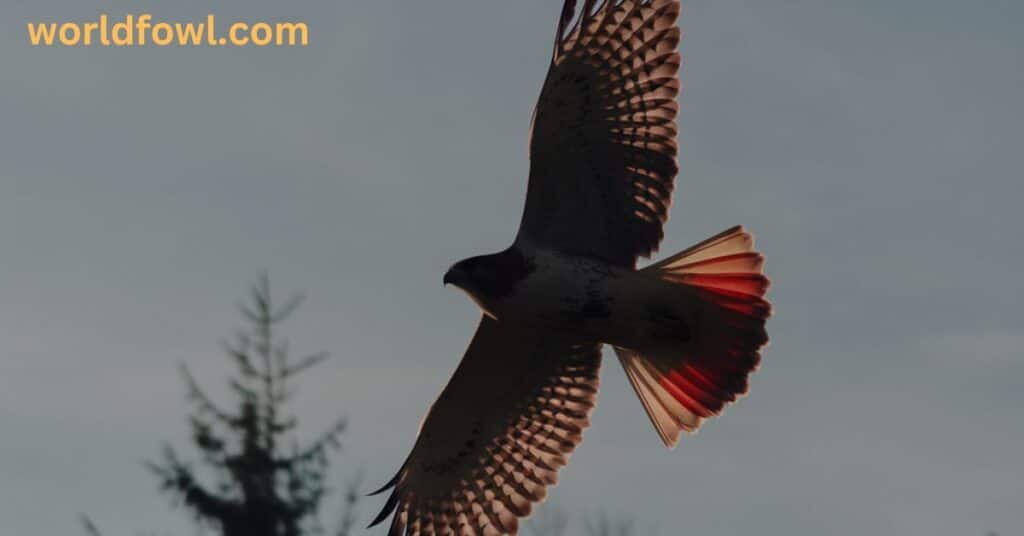
The Red-tailed Hawk is one of the most common raptors in North America. Known for its distinctive red tail, this species is highly adaptable and can be found in various habitats, including urban areas.
- Aggression Level: High, especially during nesting season.
- Behavior: They are known to dive at perceived threats, including humans. Their large size and powerful talons make them formidable defenders of their territory.
you can also read : Finches In Texas – The Complete Guide To Texas Finches
Cooper’s Hawk
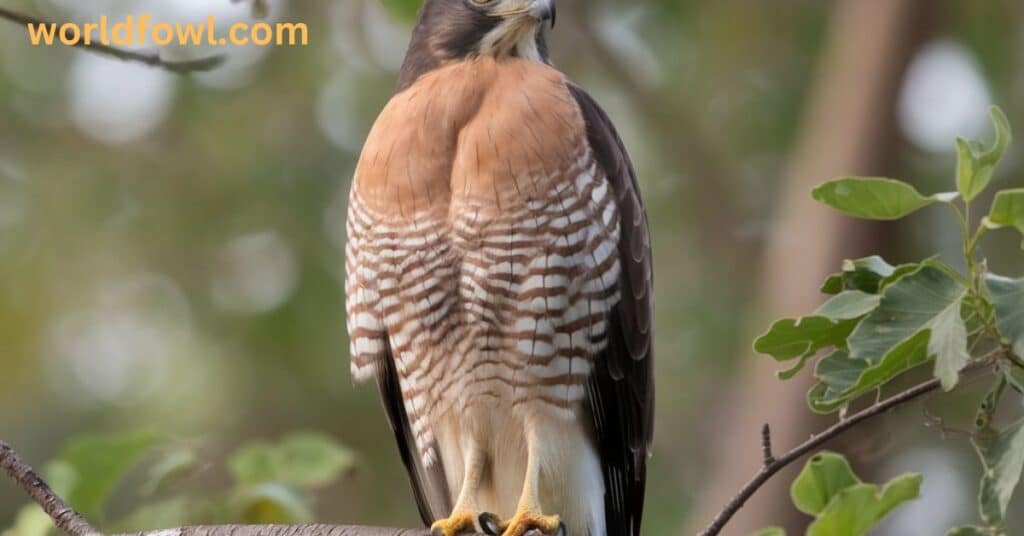
Cooper’s Hawks are smaller and more agile than Red-tailed Hawks. They thrive in urban environments and are often seen in backyards.
- Aggression Level: Moderate to High.
- Behavior: These hawks often display aggressive behavior when nesting, particularly if they perceive humans or pets as threats.
Sharp-shinned Hawk
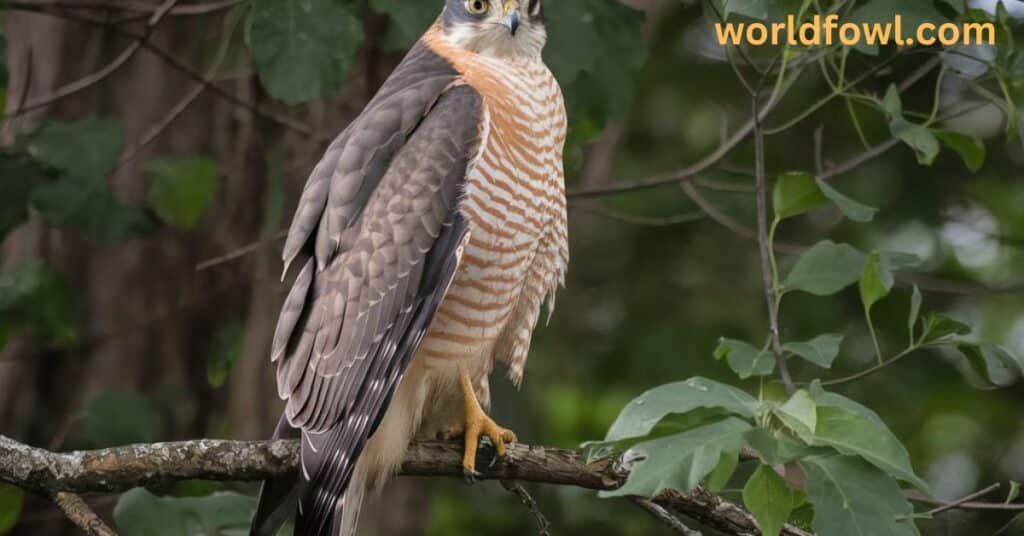
Similar to Cooper’s Hawks, Sharp-shinned Hawks are known for their speed and agility. They are more elusive but can display aggressive behavior when defending their nests.
- Aggression Level: Moderate.
- Behavior: They may swoop down on perceived threats, but their attacks are usually less intense than those of Red-tailed or Cooper’s Hawks.
Harris’s Hawk
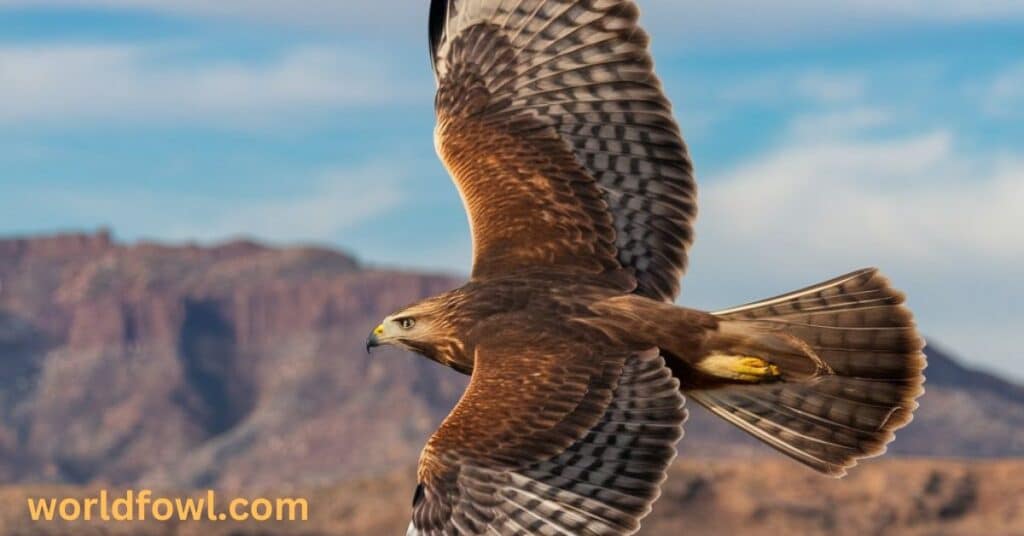
Harris’s Hawks are unique among hawks due to their social behavior. They often hunt in groups, which can lead to different dynamics in their interactions with humans.
- Aggression Level: Variable, depending on the situation.
- Behavior: While they are generally not aggressive towards humans, they may defend their territory or nests if they feel threatened.
Table: Hawk Species and Their Aggression Levels
| Hawk Species | Aggression Level | Common Locations |
| Red-tailed Hawk | High | Open fields, forests |
| Cooper’s Hawk | Moderate to High | Urban areas, woodlands |
| Sharp-shinned Hawk | Moderate | Forests, gardens |
| Harris’s Hawk | Variable | Southwest US, Latin America |
Can Hawks Pick Up Babies?
A sensational myth that persists is the belief that hawks can pick up babies. Let’s clarify this misconception.
Size Comparison
Hawks, while powerful, cannot lift heavy weights relative to their size.
- Weight Limitations: Most hawks can carry prey that weighs no more than one-third of their body weight. Given that infants weigh significantly more, the likelihood of a hawk successfully lifting a child is virtually nonexistent.
Real-Life Cases
While there have been anecdotal reports of hawks attempting to grab small pets, verified incidents involving children are unfounded and often exaggerated.
- Myth Busting: In 2019, a viral video claimed to show a hawk grabbing a small child. However, this incident was later proven to be staged, highlighting how misinformation can spread.
Can Hawks Kill Humans?
The notion that hawks can kill humans is largely the stuff of fiction.
Historical Context
There are few recorded incidents where hawks have seriously injured or even killed a human. Most of these cases involved unusual circumstances.
- Rare Incidents: A documented case from the early 20th century involved a hawk attacking a person during a falconry demonstration, resulting in severe injuries. However, such occurrences are extremely rare.
Comparison with Other Predators
When comparing hawks to other birds of prey, the risk level remains low.
- Eagles and Owls: Larger birds like eagles or owls can pose a greater threat due to their size and hunting capabilities. However, even their attacks are uncommon.
Are Hawks Aggressive?
Understanding hawk aggression involves examining their behavior in the wild.
Definitions of Aggression in Birds of Prey
Aggression in hawks can manifest in various forms, primarily during territorial defense and fear responses.
- Behavioral Observations: Wildlife biologists note that hawks exhibit aggression through vocalizations, posturing, and physical attacks.
Seasonal Variations
Aggression levels can fluctuate based on the time of year. During nesting season, hawk aggression tends to peak.
- Breeding Season: This typically occurs from late winter to summer, leading to more frequent and intense interactions with humans. ” Do Hawks Attack People ”
you might like : Herons In Michigan – The Complete Guide To 8 Michigan Herons
Understanding Hawk Behavior
Hawks operate based on instinct rather than emotion. Their aggressive responses stem from survival instincts.
- Instinct vs. Emotion: While humans may interpret aggressive behavior as “mean,” for hawks, it’s a necessary reaction to threats.
Insights from Ornithologists
Experts emphasize the importance of understanding hawk behavior in context. Dr. Jane Smith, a wildlife biologist, notes, “Hawks are not mean; they are simply protecting their territory and ensuring their survival.”
Coexisting with Hawks
To enjoy the beauty of hawks without fear, it’s important to understand how to coexist peacefully with these birds.
Respecting Their Space
- Observe from a Distance: Use binoculars or a camera to observe hawks without getting too close. This way, you can enjoy their beauty without infringing on their territory.
- Educate Others: Share your knowledge about hawk behavior with friends and family. Understanding these birds can lead to a greater appreciation of their role in the ecosystem.
Encouraging Healthy Habitats
- Create Bird-Friendly Spaces: If you have a garden or yard, consider planting native plants that attract prey for hawks, such as rodents. This way, you can help maintain a balanced ecosystem while enjoying hawk sightings.
- Avoid Feeding Hawks: While it might be tempting to feed hawks, doing so can disrupt their natural hunting instincts and lead to dependency on human-provided food sources. ” Do Hawks Attack People ”
Engaging in Responsible Wildlife Observation
- Join Local Birdwatching Groups: Many communities have birdwatching clubs that promote safe and responsible wildlife observation. Engaging in these activities can enhance your understanding of hawks and their behavior.
- Participate in Citizen Science: Contributing to citizen science projects focused on raptors can help researchers gather valuable data while allowing you to learn more about these incredible birds.
Community Involvement
Engaging with your community about hawks and wildlife can foster greater understanding and respect for these birds.
- Organize Educational Workshops: Collaborate with local wildlife organizations to host workshops that educate the public about hawk behavior and conservation.
- Promote Local Conservation Efforts: Get involved in initiatives aimed at preserving hawk habitats and supporting raptor populations.
The Importance of Conservation
Protecting Hawk Habitats
Conserving hawk habitats is crucial for ensuring their survival and minimizing human-wildlife conflicts. Here are some key points to consider:
- Habitat Loss: Urbanization and land development often lead to habitat loss for hawks and other wildlife. Protecting natural areas can help maintain healthy ecosystems.
- Creating Wildlife Corridors: Establishing wildlife corridors can allow hawks and other animals to migrate safely between habitats without encountering human dangers.
Legal Protections
In many regions, hawks are protected under various wildlife conservation laws. Understanding these regulations can help promote responsible behaviors: ”Do Hawks Attack People ”
- Migratory Bird Treaty Act: In the United States, this act protects migratory birds, including many hawk species, from hunting and habitat destruction.
- Local Conservation Efforts: Many local organizations work to protect raptor populations through conservation programs, habitat restoration, and public education.
Engaging with the Community
Communities can play a vital role in hawk conservation efforts. Here are some strategies:
- Community Monitoring Programs: Encourage local residents to participate in monitoring hawk populations and their behaviors. This data can be valuable for research and conservation efforts.
- Public Awareness Campaigns: Launch campaigns to raise awareness about the importance of hawks in the ecosystem and the need for their protection.
you can also read : How and Where Do Geese Sleep? The Secrets of Goose Slumber
The Role of Hawks in Culture and Folklore
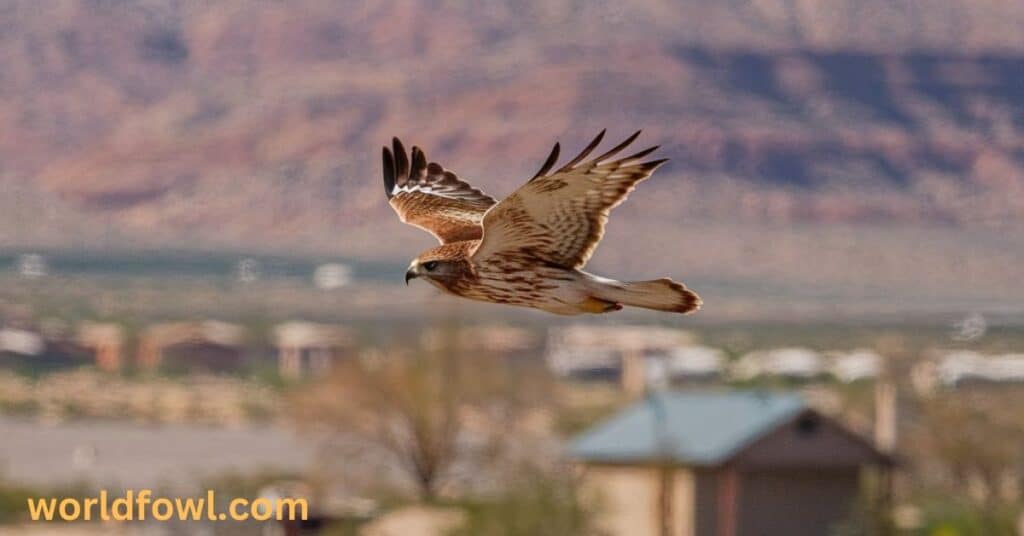
Hawks have held significant cultural and symbolic meanings throughout history.
Symbolism of Hawks
In various cultures, hawks symbolize different qualities:
- Freedom and Power: The ability of hawks to soar high in the sky often symbolizes freedom and independence.
- Vision and Insight: Due to their exceptional eyesight, hawks are seen as symbols of vision and clarity in decision-making.
Folklore and Mythology
Hawks appear in numerous myths and folklore traditions around the world:
- Egyptian Mythology: In ancient Egypt, the hawk-headed god Horus symbolized the sky, war, and hunting, reflecting the bird’s importance in their culture.
Modern Cultural References
Hawks continue to inspire art, literature, and popular culture:
- Literature: Hawks are often featured in poetry and literature as symbols of the wild and untamed spirit of nature.
- Media: Films and documentaries about wildlife frequently showcase hawks, highlighting their role as apex predators.
The Science of Hawk Migration
Hawk migration is a fascinating phenomenon that captivates birdwatchers and researchers alike.
Migration Patterns
Many hawk species migrate seasonally, traveling long distances between breeding and wintering grounds.
- Timing of Migration: Migration typically occurs in the fall and spring. Hawks often follow specific flyways, taking advantage of thermal currents to conserve energy during their journeys.
- Species-Specific Routes: Different species have distinct migration patterns. For example, broad-winged hawks migrate in large kettles, while red-tailed hawks may travel alone or in smaller groups.
Research and Tracking
Scientists employ various methods to study hawk migration patterns:
- Banding Programs: Researchers band hawks to track their movements and gather data on their migration routes and behaviors.
- Satellite Tracking: Advanced technology allows scientists to use GPS devices to monitor the movements of migrating hawks in real-time.
Citizen Science Contributions
Birdwatchers and volunteers play a crucial role in monitoring hawk migration. Citizen science projects allow enthusiasts to contribute valuable data to researchers.
- Hawk Watches: Many birdwatching groups organize hawk watches during migration seasons. Observers count and record the number of hawks seen, their species, and flight patterns. This data helps scientists understand population trends and migration routes.
- Online Databases: Platforms like eBird allow users to submit their sightings of hawks, contributing to a larger database used by researchers to analyze migration patterns and population dynamics.
Conservation Implications
Understanding hawk migration is essential for conservation efforts:
- Habitat Protection: Protecting key stopover sites along migration routes can help ensure that hawks have safe places to rest and refuel during their long journeys.
- Climate Change Impact: Researchers study how climate change affects migration timing and routes. Alterations in weather patterns can disrupt traditional migration cycles, impacting hawk populations.
The Impact of Urbanization on Hawks
Urbanization poses unique challenges and opportunities for hawks. As cities expand, understanding how these birds adapt is crucial.
Adaptation to Urban Environments
Many hawk species have shown remarkable adaptability to urban settings:
- Nesting in Cities: Hawks often nest on tall buildings, bridges, and other structures that mimic their natural habitats. For example, red-tailed hawks have been observed nesting on skyscrapers in major cities.
- Hunting in Urban Areas: Urban areas can provide abundant food sources, such as rodents and pigeons. Hawks often take advantage of these prey populations, leading to increased sightings in city parks and residential areas.
Human-Wildlife Conflicts
While urban environments offer benefits, they can also lead to increased conflicts between hawks and humans:
- Nest Protection: As hawks nest in urban areas, they may exhibit aggressive behavior towards people and pets that approach their nests. This can lead to incidents of swooping and defensive displays.
- Collisions with Structures: Hawks may face hazards such as collisions with windows, vehicles, and other structures. Additionally, urban pollution can impact their health and hunting success.
Community Engagement
Educating communities about hawks and their behaviors can mitigate conflicts:
- Awareness Campaigns: Local wildlife organizations can run campaigns to inform residents about hawk nesting seasons and how to coexist peacefully with these birds.
- Habitat Enhancement: Communities can create bird-friendly spaces by planting native vegetation and providing natural perches, which can help attract hawks while minimizing conflicts.
The Fascinating World of Hawk Communication
Hawks communicate through various vocalizations and body language. Understanding these signals can enhance our appreciation of their behavior.
Vocalizations
Hawks use a range of calls to communicate with one another:
- Alarm Calls: When threatened, hawks emit sharp alarm calls to warn their mates or young. These calls can deter potential threats and signal the need for caution.
- Mating Calls: During courtship, hawks perform specific vocalizations to attract mates. These calls can vary by species and are often accompanied by elaborate aerial displays.
Body Language
Hawks also use body language to convey messages:
- Posturing: When defending territory, a hawk may puff up its feathers, spread its wings, and engage in aggressive posturing to intimidate intruders.
- Flight Displays: During mating season, hawks perform aerial displays, showcasing their agility and strength. These displays not only attract mates but also reinforce pair bonds.
Understanding Communication in Context
Hawks’ communication is context-dependent. Observing their interactions can provide insights into their social dynamics and behaviors.
- Watching Interactions: Birdwatchers can learn a great deal by simply observing hawks in their natural habitats. Noting the differences in vocalizations and body language during various situations can deepen understanding.
The Role of Hawks in Ecosystems
Hawks are apex predators, and their presence in an ecosystem serves several important functions:
Population Control
Hawks help regulate populations of small mammals and birds, preventing overpopulation and maintaining ecological balance.
- Prey Dynamics: By preying on rodents and other small animals, hawks can influence the distribution and behavior of these species, which in turn affects plant communities and overall ecosystem health.
- Indicator Species: As top predators, hawks are often considered indicator species. Their presence and health can reflect the overall condition of the ecosystem.
Scavenging Contributions
In addition to being predators, some hawks also scavenge, contributing to nutrient cycling:
- Cleaning Up Ecosystems: By feeding on carrion, hawks help clean up the environment, preventing the spread of disease and promoting ecological health.
- Interconnected Food Webs: Hawks are part of complex food webs, interacting with various species. Their hunting and scavenging behaviors help maintain these interconnected systems.
The Importance of Research on Hawks
Research plays a vital role in understanding hawk behavior, migration, and conservation needs.
Ongoing Studies
Numerous studies focus on various aspects of hawk biology and ecology:
- Migration Research: Long-term studies track migration patterns, helping researchers understand how environmental changes affect hawk populations.
- Behavioral Studies: Research into hawk behavior, including hunting strategies and social interactions, provides insights into their adaptability and ecological roles.
Collaboration with Conservation Organizations
Many researchers collaborate with conservation organizations to enhance the protection of hawks and their habitats:
- Data Sharing: Researchers often share findings with organizations focused on avian conservation, helping to inform management strategies and policy development.
- Community Engagement: Engaging the public in research efforts can raise awareness and foster support for conservation initiatives.
The Fascinating Lore of Falconry
Falconry, the ancient art of training birds of prey for hunting, has a rich history that includes hawks.
Historical Background
Falconry dates back thousands of years, with roots in various cultures around the world:
- Ancient Traditions: Historical records indicate that falconry was practiced in ancient Egypt, Persia, and China, where it was regarded as a noble pursuit.
- Cultural Significance: In medieval Europe, falconry became a symbol of status among nobility, with specific laws governing the types of birds that could be owned.
The Practice of Falconry
Falconry involves training hawks and other birds of prey to hunt game. Key aspects include:
- Training Techniques: Falconers use various techniques to train hawks, often starting with basic commands and gradually introducing hunting scenarios.
- Hunting Practices: Trained hawks are used to hunt small game, such as rabbits and birds. The bond between the falconer and the hawk is based on trust and mutual respect.
Conservation and Falconry
Falconry has evolved to include conservation efforts:
- Breeding Programs: Many falconers participate in breeding programs aimed at preserving specific hawk species and enhancing genetic diversity.
- Education and Awareness: Falconers often engage in educational outreach to promote awareness about hawks and their ecological importance.
The Future of Hawks and Conservation
As we look to the future, several key factors will shape the conservation of hawks and their habitats:
Climate Change
Climate change poses significant challenges for hawk populations:
- Shifts in Migration Patterns: Changes in temperature and weather patterns can disrupt traditional migration routes, affecting breeding and survival.
- Habitat Loss: As habitats change due to climate-related factors, hawks may face increased competition for resources and suitable nesting sites.
Urbanization and Development
Urban growth continues to impact hawk populations:
- Loss of Natural Habitat: The expansion of urban areas leads to habitat fragmentation, which can isolate hawk populations and reduce their genetic diversity.
- Human-Wildlife Conflicts: Increased interactions between hawks and humans in urban settings highlight the need for effective management strategies.
Community Involvement
Community engagement is crucial for successful hawk conservation:
- Local Conservation Initiatives: Communities can play a vital role in protecting hawk habitats through local conservation efforts, such as habitat restoration and education programs.
- Advocacy and Awareness: Raising awareness about hawk conservation can foster support for policies and practices that protect these birds and their environments.
Research and Innovation
Continued research and innovation will be essential for understanding hawk populations and informing conservation strategies:
- Technology Integration: Utilizing advanced technologies, such as satellite tracking and remote sensing, can enhance our understanding of hawk behaviors and migration patterns.
- Interdisciplinary Approaches: Collaboration across disciplines, including ecology, environmental science, and social sciences, will provide a comprehensive understanding of hawk conservation needs.
Conclusion : Do Hawks Attack People ?
In conclusion, ” Do Hawks Attack People ?” while hawks are generally not aggressive towards humans, understanding their behavior, especially during nesting season and in urban environments, is crucial for fostering safe interactions. By recognizing the role of hawks in ecosystems and engaging in conservation efforts, we can ensure their continued presence in our landscapes.
Hawks, as apex predators, play an essential role in maintaining ecological balance. Their adaptability to urban environments and the challenges they face from climate change and habitat loss highlight the importance of ongoing research and community involvement in conservation efforts.
As we learn more about these remarkable birds, let’s work towards a future where humans and hawks can coexist harmoniously, appreciating the beauty and significance of these incredible raptors.
Call to Action : Do Hawks Attack People ?
If you’ve had experiences with hawks or are interested in learning more about their conservation, consider participating in local birdwatching activities, supporting conservation organizations, or simply sharing your knowledge with others. Together, we can contribute to the protection of hawks and ensure that future generations can admire and respect these magnificent creatures.

Henry James is a seasoned blogger and a passionate storyteller on “World Fowl.” With years of experience crafting engaging content, he brings a unique blend of expertise and creativity to his writing. Henry specializes in exploring diverse topics with depth and clarity, captivating readers worldwide.

